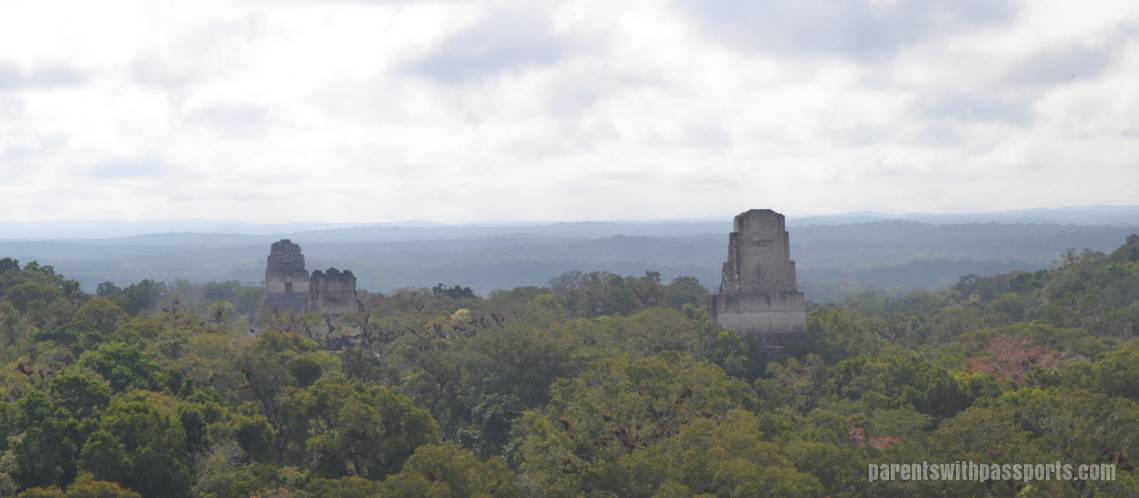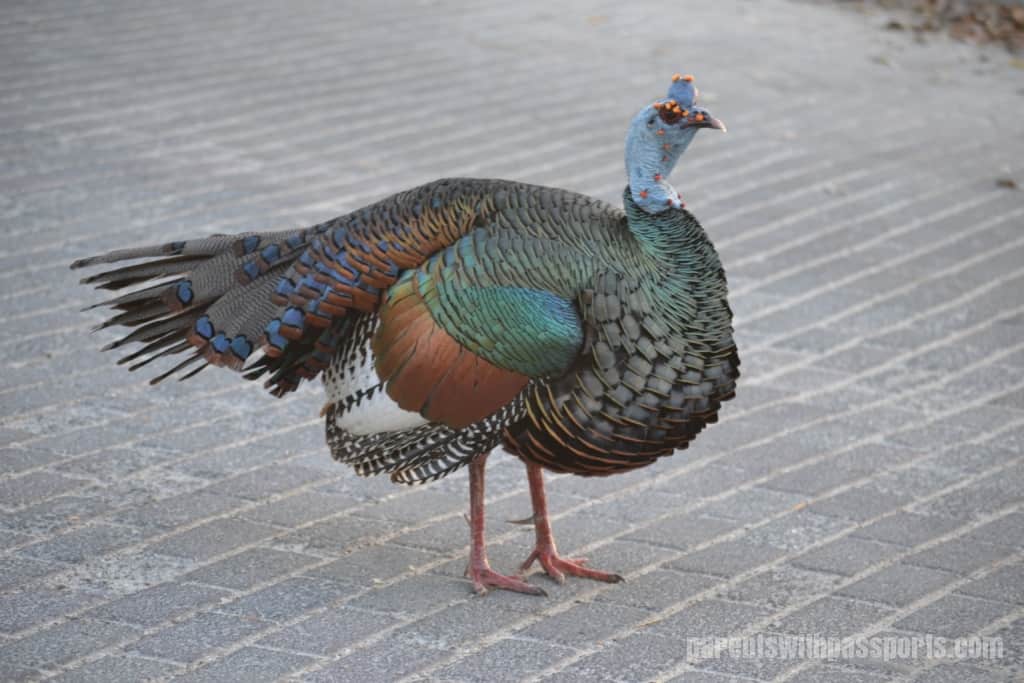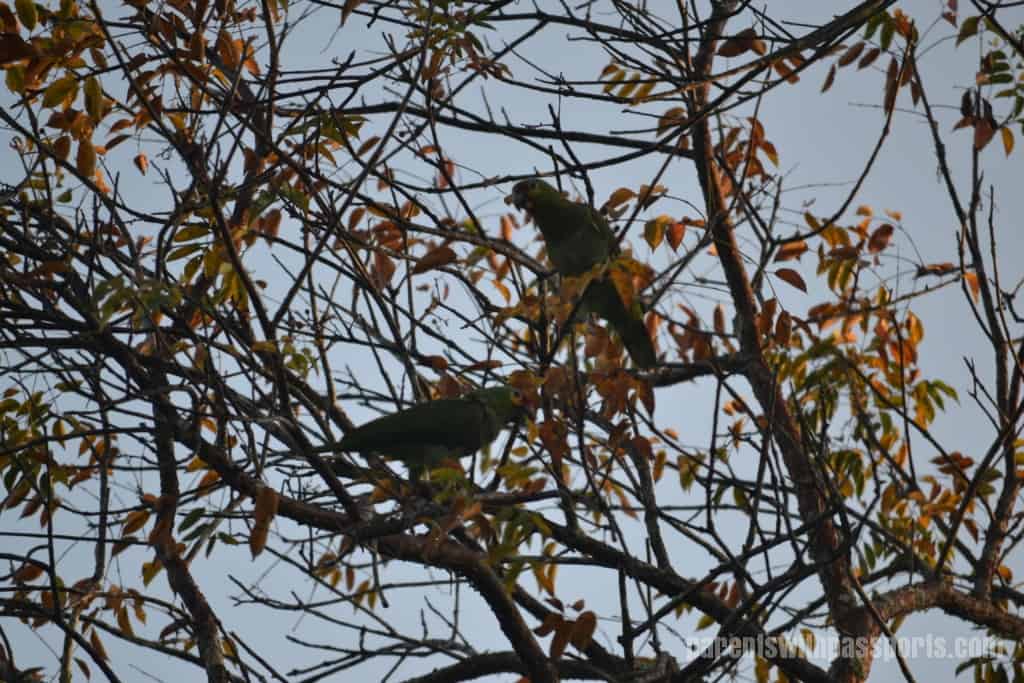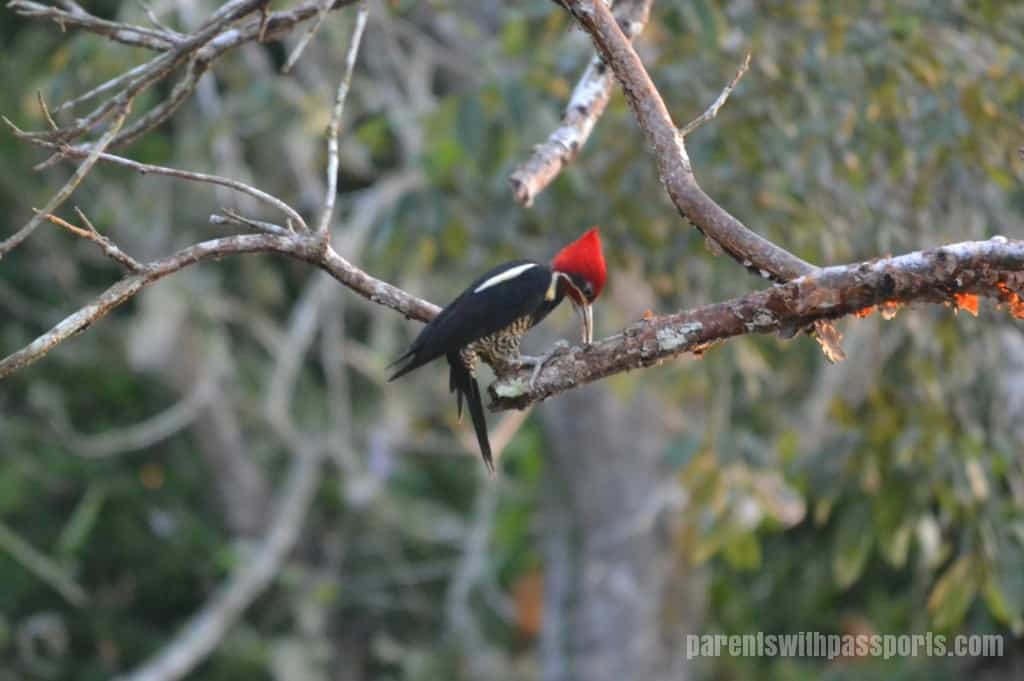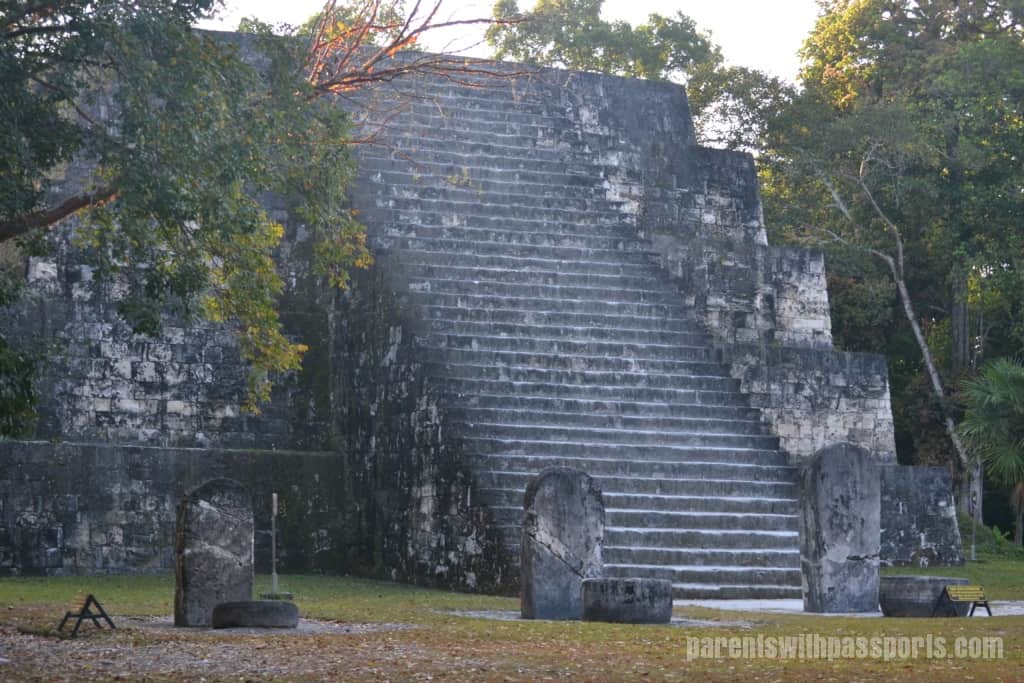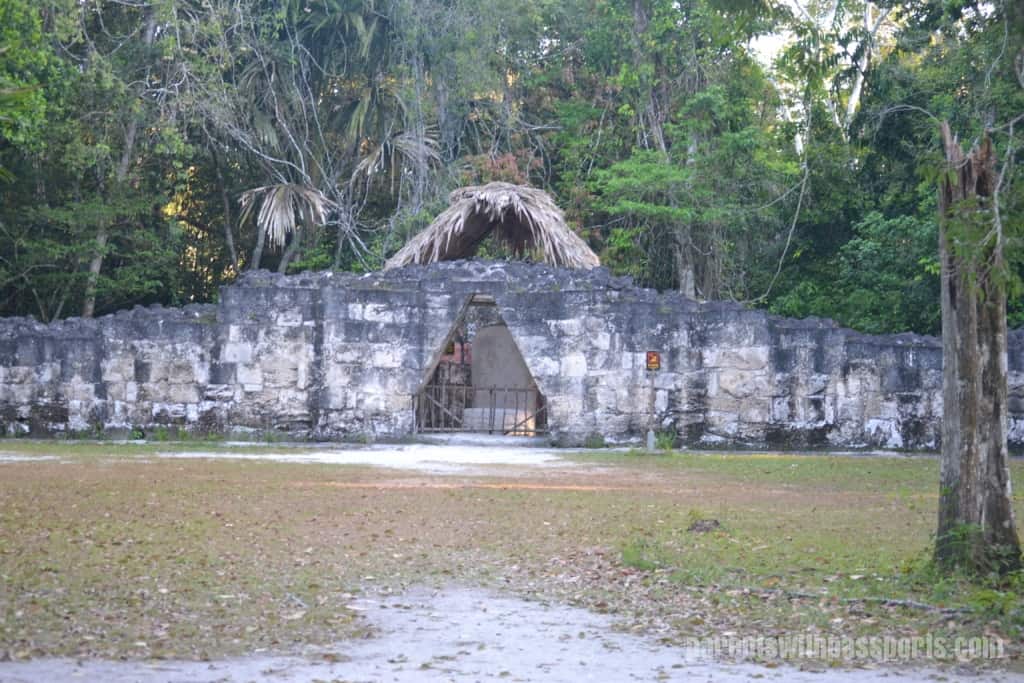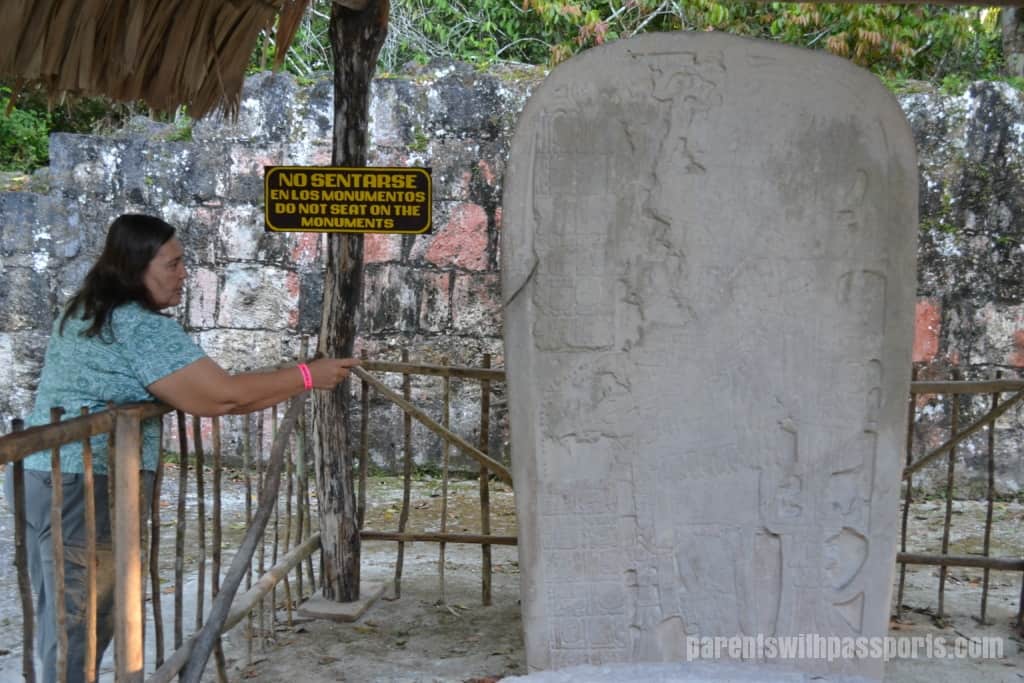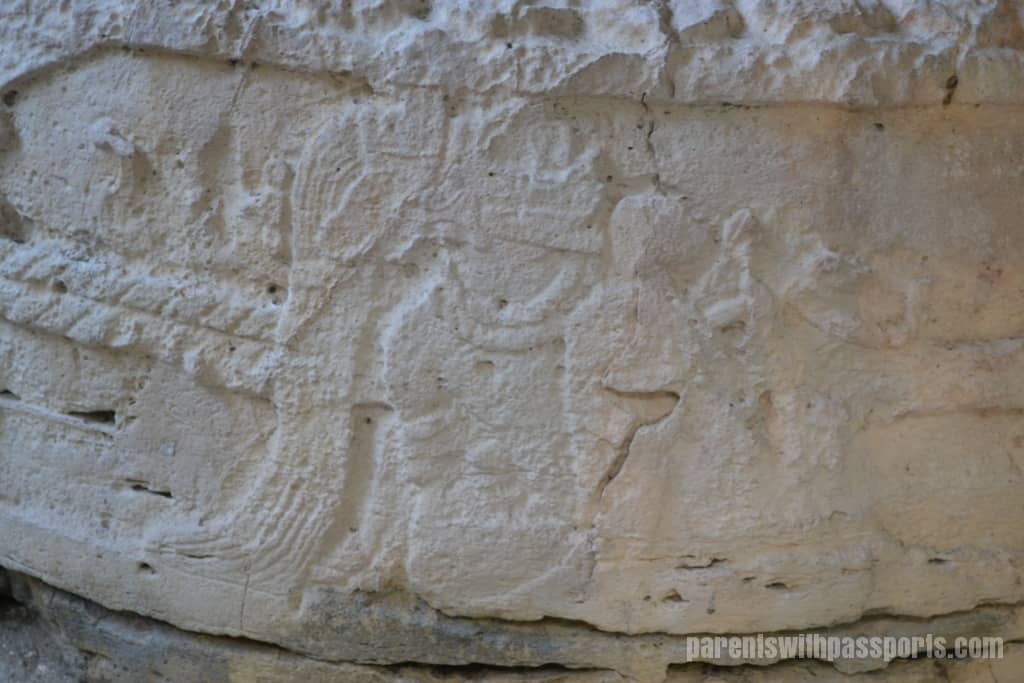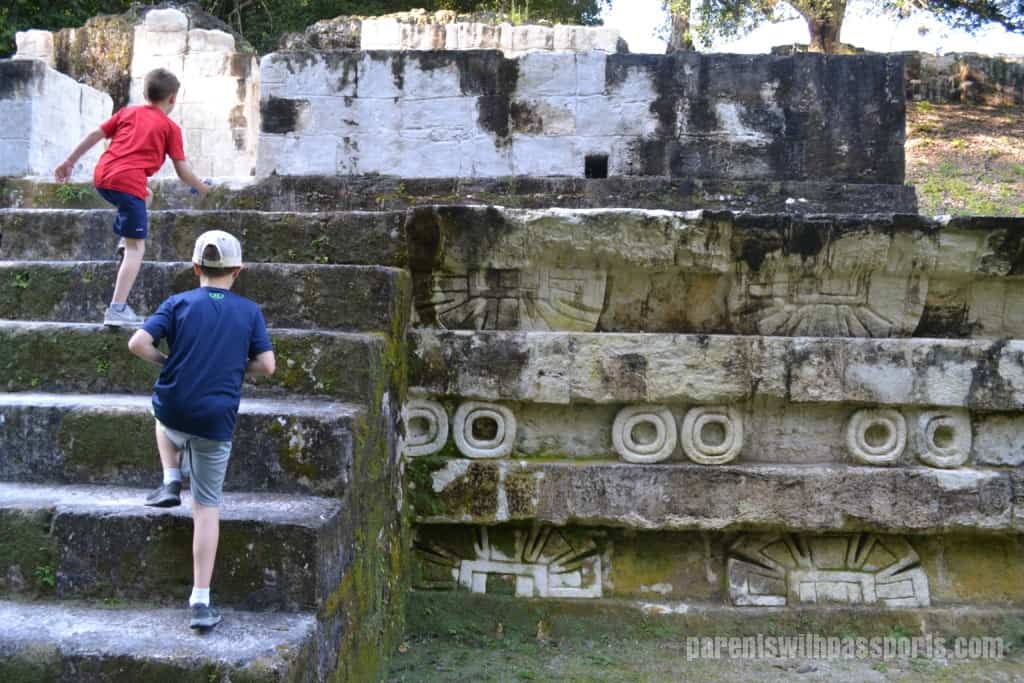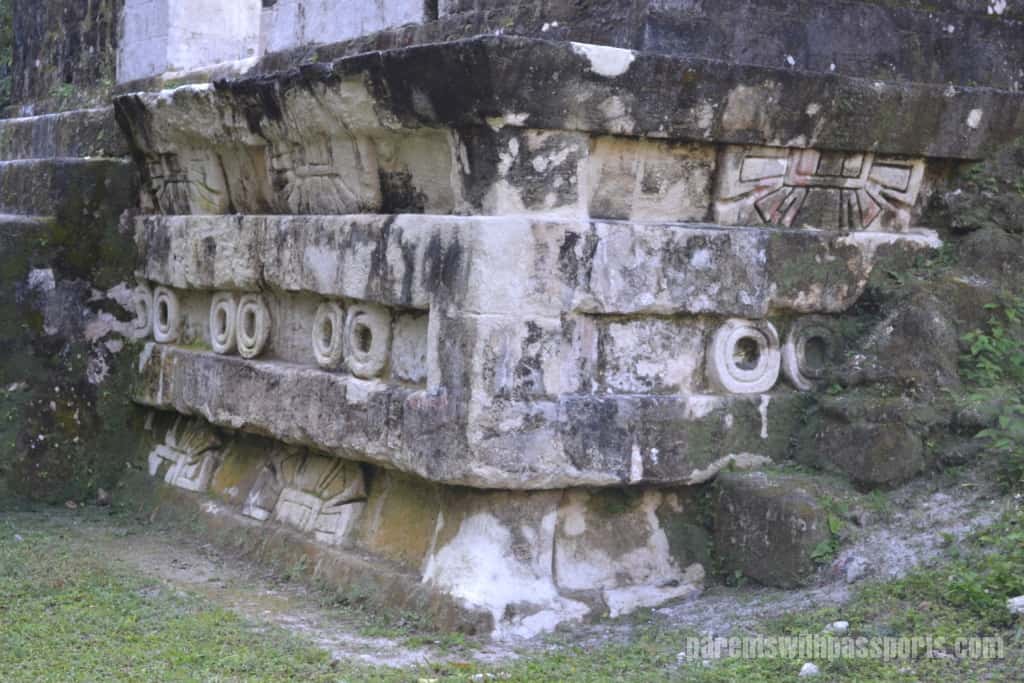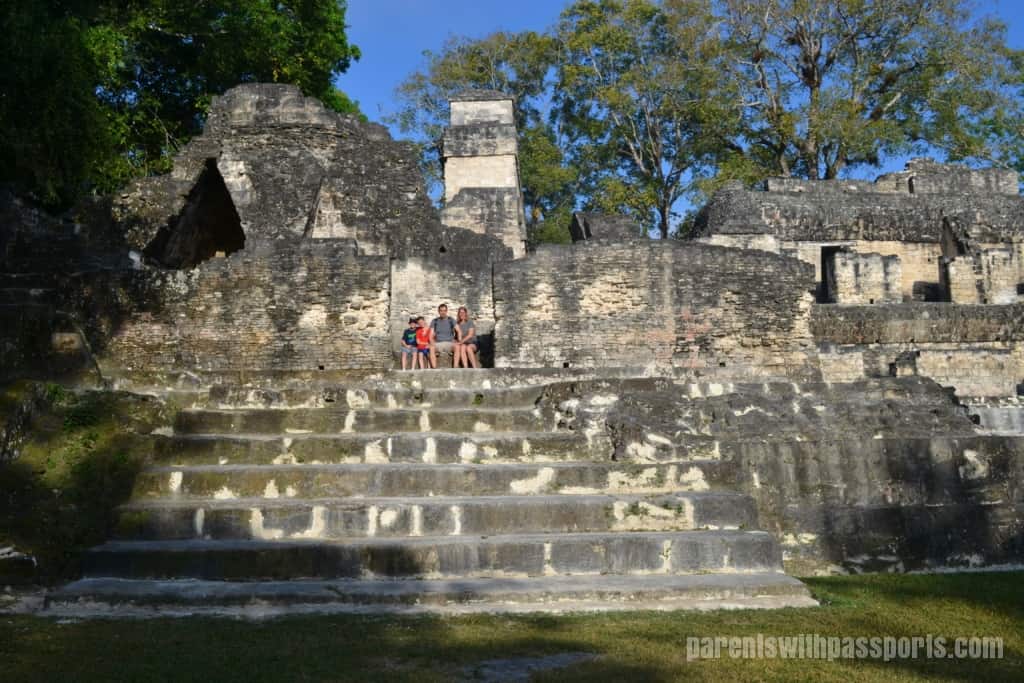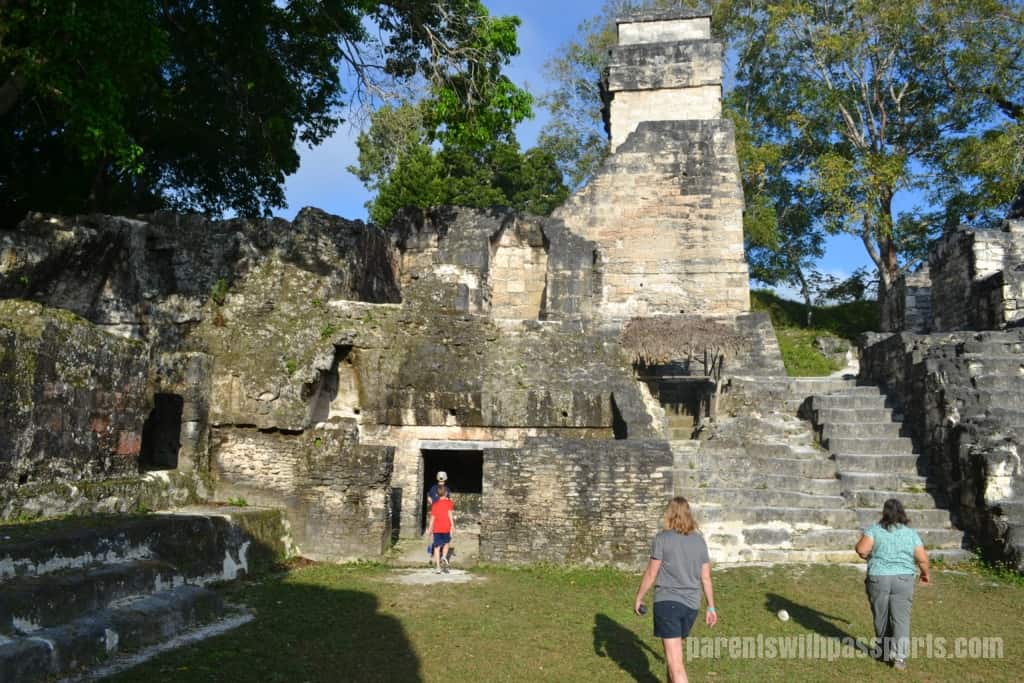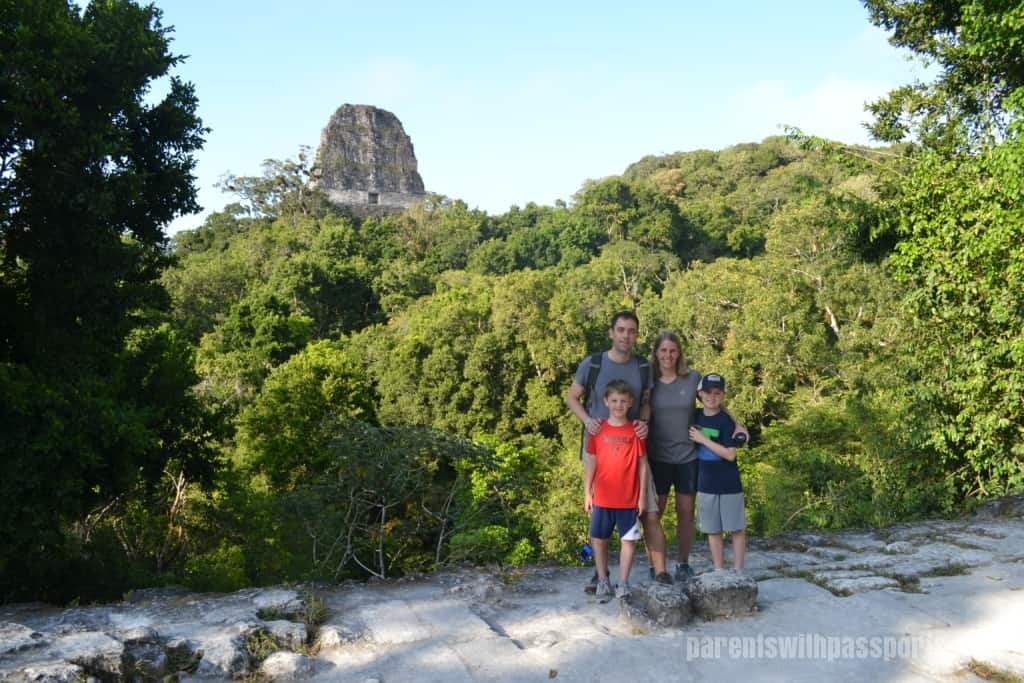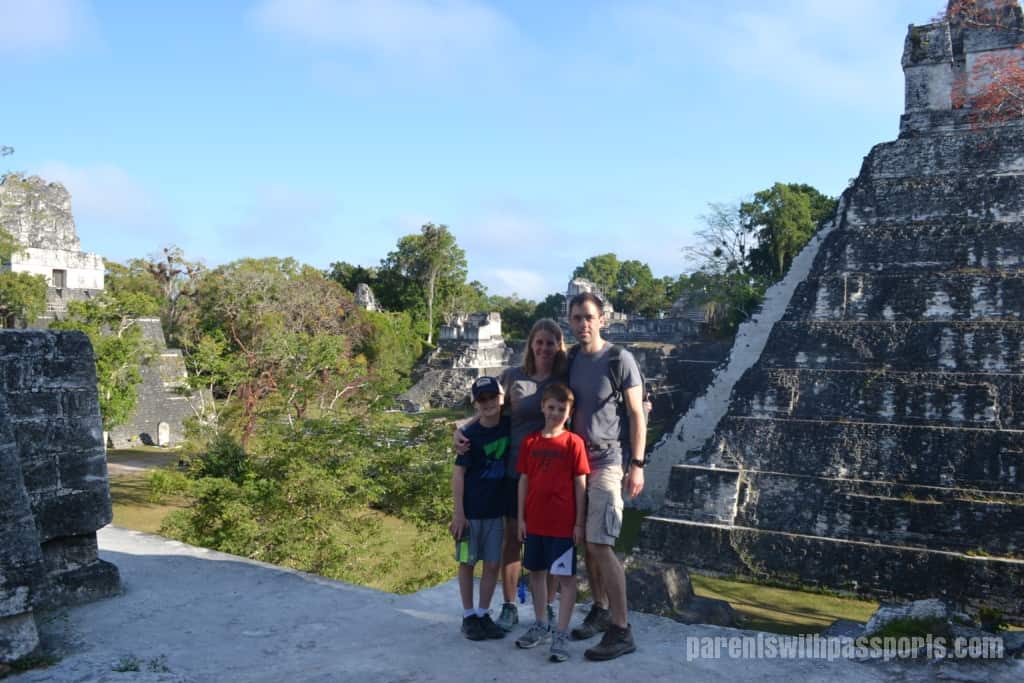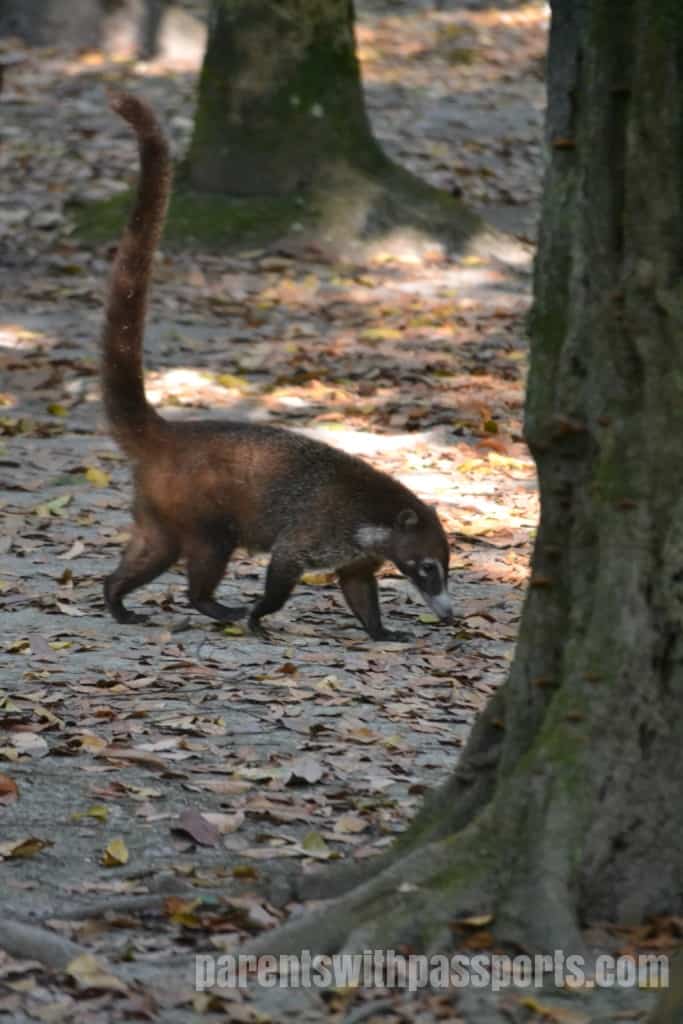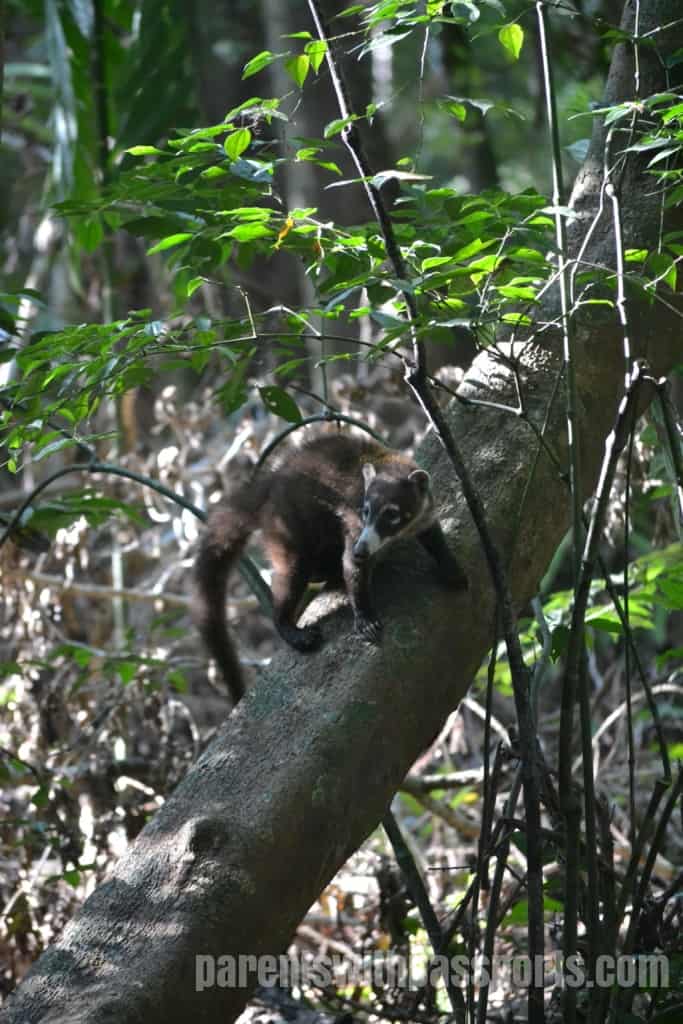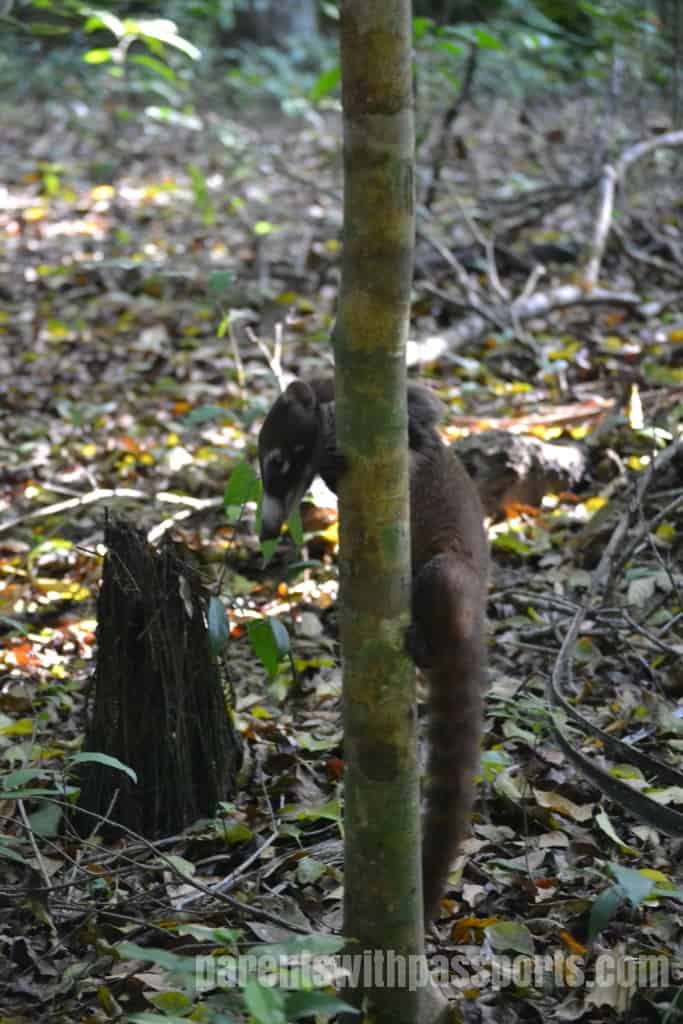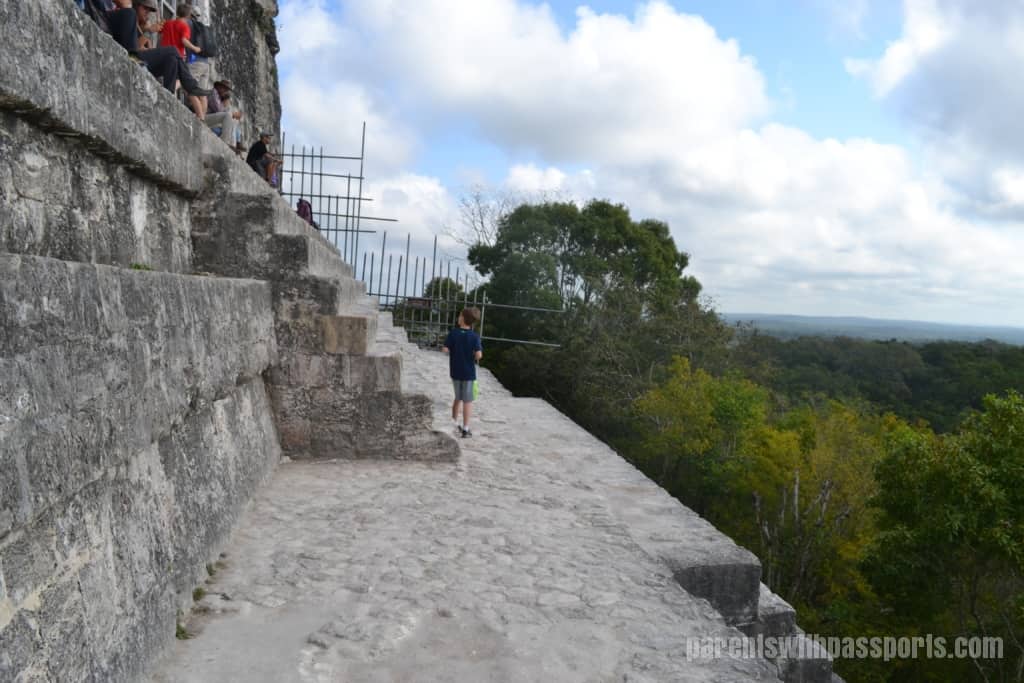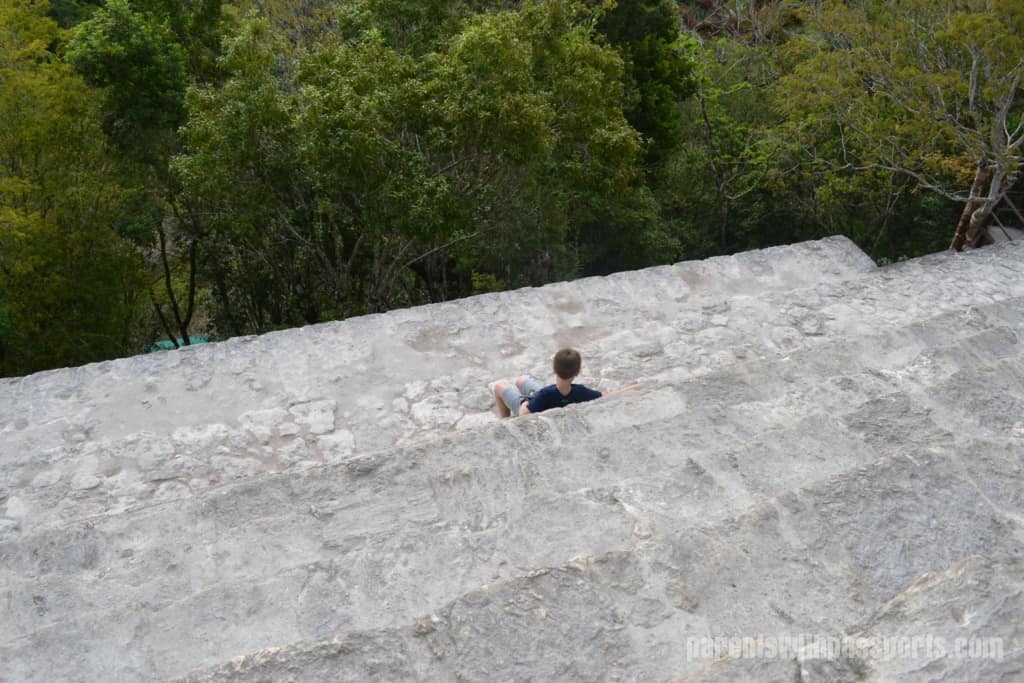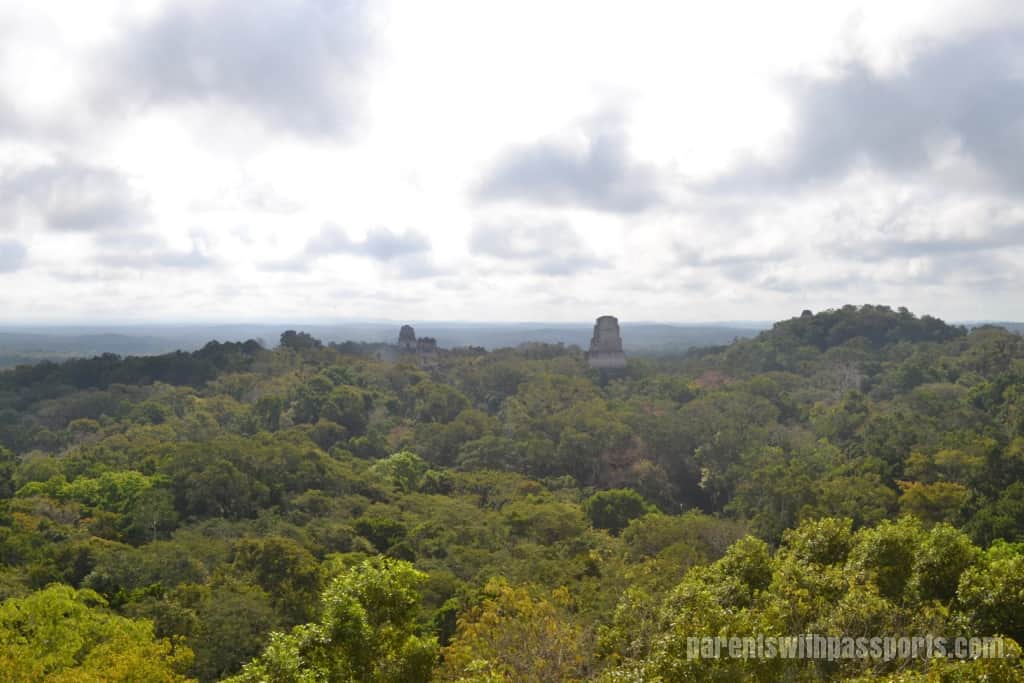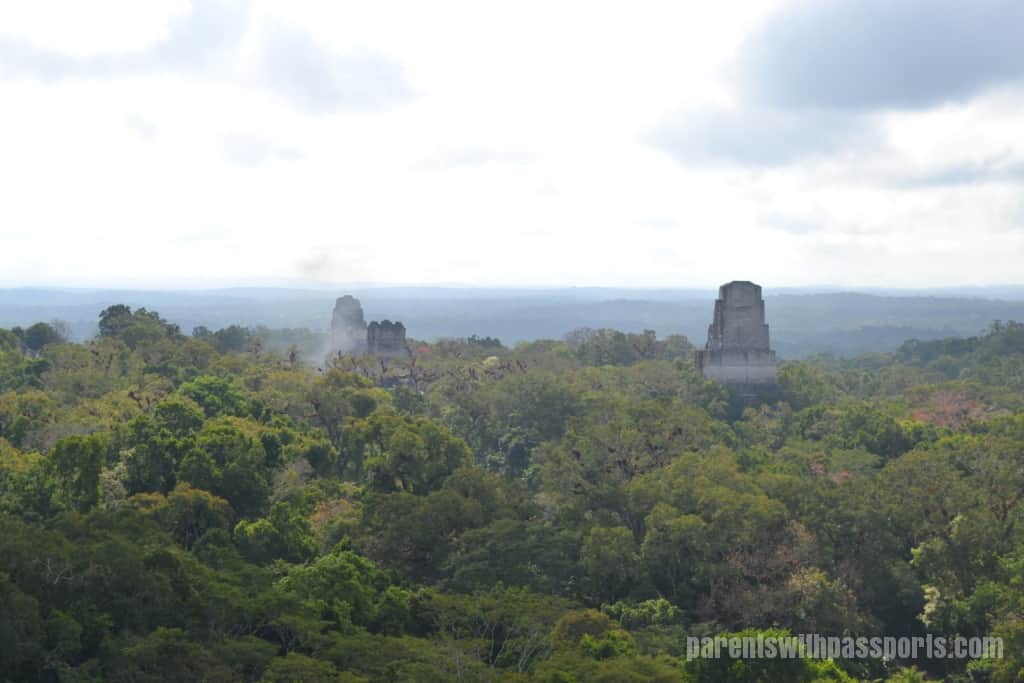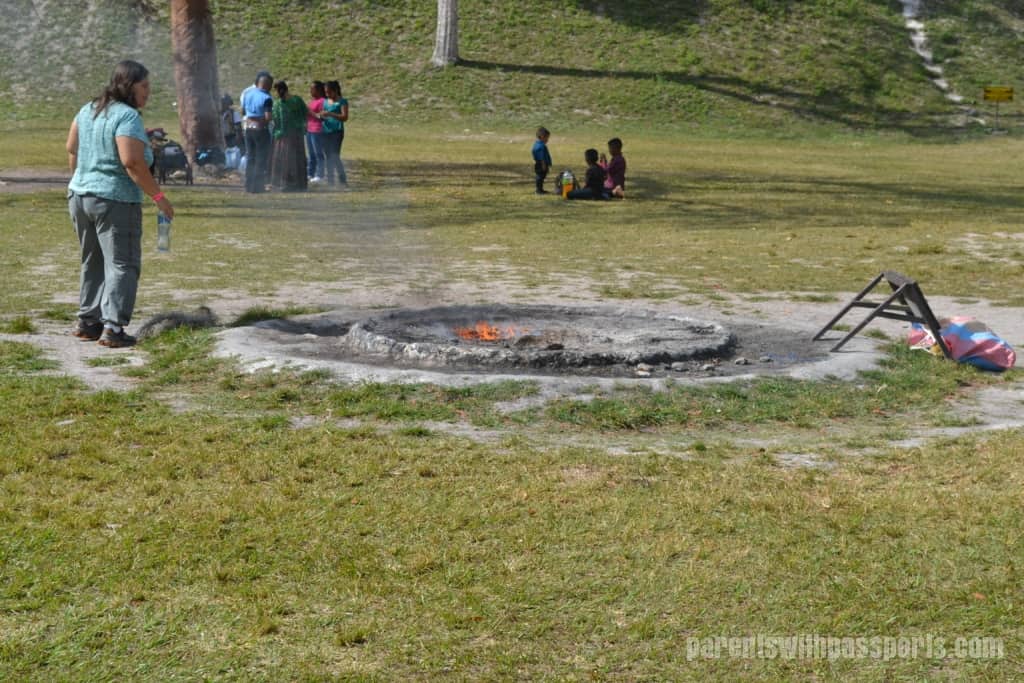Most people who stay overnight in Tikal do so in order to go on the sunrise tour. I am certain that watching the sun come up over the jungle treetops while listening to the birds and animals wake up around you would be an absolutely amazing experience. I am also certain that it involves getting up at a ridiculous hour. I know my children’s limits. A 4am departure time for a tour is not within their limits.
But we still wanted to experience the jungle early in the morning when the animals are most active and the park is least crowded. We opted for a private morning tour with Roxy Ortiz and told her that we wanted to focus on wildlife. 6am seemed like a good compromise – still early enough to hopefully see lots of wildlife but not so early that the kids would revolt or that we would need to buy the extra sunrise ticket.
We still had to wake the kids up super early, especially given the long day of travel and touring we had the previous day. But this was the thing RB was most excited about so they got up with (mostly) no protesting. We had ordered boxed breakfasts from the hotel restaurant the night before and ate them quickly in our room before heading out to meet Roxy.
Before even entering the park, it was evident that this was a great time of day to see wildlife. In the parking lot area, we saw ocellated turkeys, parrots, and woodpeckers.
With an eye out and ear open for wildlife at all times, Roxy started our tour. We headed to one of the nine Twin Pyramid Complexes in Tikal. Every k’atun (a Mayan period of time roughly equivalent to 20 years), a new twin pyramid complex was built in Tikal to hold a ceremonial celebration to mark the end of that cycle of the calendar. All twin pyramid complexes had the same layout – two flat-topped pyramids facing each other on the east and west ends of the plaza, with two rectangular buildings on the north and south ends. The north building held a stela, which depicted the current ruler, and an altar, which depicted a captive doomed for sacrifice.
We walked into complex Q, where a 5 tiered, flat-topped pyramid stood on the east side of the plaza with a series of plain stelae and altars at its foot. On the north side of the plaza, a rectangular building housed the stela celebrating the k’atun. The building on the south side of the plaza featured a single room with nine doors representing the 9 layers of the underworld. The matching pyramid on the west side of the plaza has not been excavated and remains a large mound of earth. Roxy explained that there are so many structures to be excavated that the second of “twin” pyramids like this are a low priority because there is less to learn from it.
Roxy showed us the stela and altar that were housed in the north building. The stela features Yax Nuun Ayiin II (also known as Chitam), the last known ruler of Tikal, while the altar depicts captives of war with their hands tied. Roxy did a great job explaining the drawings to the kids and pointing out the different features so that they could really make out the scene depicted.
From there we made our way behind Temple I to the East Plaza. Here we saw Structure 5D-43, which is a small radial temple. Its architecture is unique in Tikal in that it appears to be a variation of the talud-tablero style used in Teotihuacan, an ancient Mayan city in Mexico. The tablero panels are flat and decorated with discs, while the talud panels are sloped and feature flowers. It was really interesting to see a such a drastically different architectural style literally built on top of an older, traditional twin pyramid.
Coming from the East Plaza, we spent some time exploring the palaces on the backside of the Central Acropolis, further off from the Great Plaza than we had been yesterday. The boys really enjoyed climbing the many stairways, peeking into doors, and exploring the small rooms. They couldn’t believe that the solid rock platforms in many of the tiny rooms were actually beds.
Roxy was great about taking family photos of us in all the key places. I love to be behind the camera but am always appreciative of someone getting a shot of the whole family for us.
We made our way across the Great Plaza and Roxy thought she heard some coatimundi. As we made our way behind Temple II, we saw a group of them exploring in the leaves, no doubt sniffing for scraps from the nearby picnic tables. We spent about 5 minutes watching them there before they headed into the woods. Getting so close to the coatimundi was clearly fascinating for the boys so Roxy led us into the woods to follow them. We even saw a baby coati! It was amazing how close we could get to them and how long they let us follow them around. Roxy was wonderful, teaching the boys all about the animal (a relative of the raccoon) and letting them spend 15-20 minutes just observing them.
From that point on, whenever we had the option to go off the main path and through a “shortcut” through the woods, Roxy led us that way. When she would tell us where we were headed next, JB would immediately ask “can we take the woods?” and she would always oblige. Although the coatimundi was our closest and best encounter, we did spot more spider monkeys and toucans high in the trees and Roxy taught us a lot about the flora along the way too.
Roxy did make me nervous when she stopped suddenly and told us all to wait with a hint of urgency in her voice. Then she said “it’s ok, he’s dead” and pointed to a snake in the path. It was a Fer-de-lance (a pit viper) and Roxy casually said “if that bit you, you’d be dead in 15 minutes.” What??? It had not even crossed my mind until that moment to be on the lookout for snakes, let alone deadly ones. So now we knew there were tarantulas and pit vipers hidden all around us in the park. Crossing paths with a jaguar suddenly seemed like it wouldn’t be so bad – at least it was big enough that we’d have a shot at spotting it before it was too late!
We stopped for close-up examination of a few stelae and altars on our way to Temple IV, which was the last stop on our tour. Temple IV (the Temple of the Two Headed Snake) stands 212 feet tall and is the highest structure not just in Tikal but across all Mayan sites. You can climb most of the way up Temple IV using a wooden staircase on the back and then walk around to the front and go up the stone temple stairs to get to the very top. Like all of the temples, the stone steps are steep and have no railings. RB was unsure about going all the way to the top so at first he took in the view from a slightly lower level.
Eventually RB joined us the few more steps up at the top. This temple was definitely the most nerve-wracking. More than any other, it appears to just emerge out of the jungle. Approaching the temple, you can’t really see its base. Similarly, from the top it just seems to drop off into nowhere. Sure footing and a brave constitution are a must. But you will be rewarded for your efforts. The view over the jungle and Tikal is breathtaking. Jungle treetops dominate the view, with Temples I, II and III bursting through. Even Hollywood circa 1977 recognized how spectacular the view was. Star Wars (the original movie, now known as Episode IV: A New Hope) filmed a scene from this very spot. You may just imagine yourself as a Rebel watching the Millennium Falcon land on Yavin 4. Yes, Tikal was not only an ancient Mayan city but was also the jungly 4th moon orbiting the planet Yavin in Star Wars.
When we passed through the Great Plaza earlier, we had seen a group of Mayans preparing for a ceremony. Present-day Mayans retain rights to hold ceremonial celebrations in Tikal, and it was Easter Sunday. From the top of Temple IV, we could see the smoke rising from between Temples I and II as their celebration got underway. When we headed back through the Great Plaza on our way of the park, the people had mostly cleared out but we could see the still smoldering fire.
Our visit to Tikal wasn’t exactly smooth or easy but was well worth it. The site is truly awe-inspiring. There is so much that is hard to wrap your head around here… The engineering and physical construction that was required to build a city of stone in the first few centuries AD. The unexplained abrupt downfall of a once dominant society. The jungle’s ability to swallow up an entire city and hide it for almost a thousand years. As much as we learned on our two tours, I know we barely scratched of the mysteries of Tikal.
